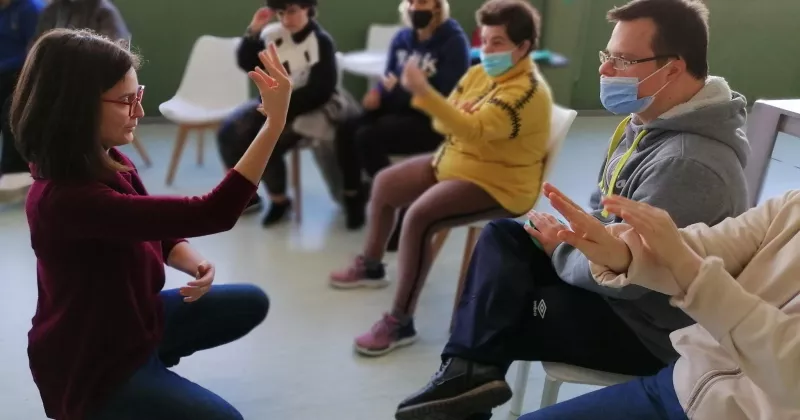Active Citizenship Education (ACE) - Hate Communication: for Elimination
Confronting Hate Communication: Preserving Democracy and Freedom of Speech
Introduction
In today's increasingly interconnected world, hate communication poses a significant threat to the fundamental principles of democracy and freedom of speech. Recognising and confronting hate communication is essential for maintaining a healthy, inclusive society where all individuals can freely express themselves without fear of dehumanization or marginalization. In Malta, authorities have the power to act ex officio, giving them the ability to take proactive measures against hate communication without needing a formal report, highlighting the importance of addressing this issue at both institutional and societal levels.
This Blog draws from the insights shared during the third session of the Active Citizenship Education series, titled "Hate Communication: For Elimination". Held on Thursday 27th of June, the session was once again led by Dr. Francois Mifsud was organised by the Directorate of Lifelong Learning and Employability (DLE) within the Ministry for Education, Sport, Youth, Research and Innovation.

What is Hate Communication?
Hate communication is a broad term that encompasses all forms of communication—verbal, written, visual, and digital—that seek to dehumanize individuals based on ethnicity, race, social class, political beliefs, and locality. The primary objective of hate communication is to strip the targeted group of their humanity, creating a hierarchical structure that places certain groups above others. This dehumanization process not only undermines the dignity of the targeted individuals but also threatens the fabric of democratic societies by promoting intolerance and division.
Historical Context
The roots of hate communication can be traced back to some of the darkest periods in history, such as the Holocaust. By examining these historical events, we gain critical insights into the mechanisms and consequences of hate communication. Understanding the severe impact of such communication through sensitization exercises helps us recognize similar patterns in modern contexts, enabling us to address and mitigate them effectively.
Types of Hate Communication
Hate communication manifests in two main forms, which are particularly distinct: pest discourses and hierarchical discourses.
1. Pest Discourses
Pest discourses dehumanize individuals by likening them to pests—creatures that evoke disgust and are often associated with starvation and elimination. This form of hate communication can incite extreme prejudice and violence. For instance, historical examples include Australians viewing Maltese immigrants as pests, fostering an environment of exclusion and hostility.
2. Hierarchical Discourses
Hierarchical discourses place individuals in a subordinate but tolerated category, maintaining control over them without complete elimination. A prominent example is sexism, where women are often seen as inferior and their contributions minimized, or else considering any action performed as typical behaviour. This type of discourse perpetuates systemic inequality by normalizing discriminatory attitudes and behaviours.
Effects on Agency
Agency, the intrinsic human ability to cause change, is a fundamental aspect of human dignity and empowerment. Hate communication aims to block agency, trapping individuals in a non-agentic state where they are unable to effect change in their lives or communities. This suppression of agency can occur in various contexts:
1. Indoctrination: When individuals are indoctrinated with hate communication, their capacity to think critically and challenge the status quo is severely limited.
2. Mental Institutions: Often, individuals in mental institutions are stripped of their perceived ability to cause change, reinforcing the general public’s view of the patient as helpless and in-capable of independency.
3. Hate Communication: By categorizing and confining individuals, hate communication restricts their agency, preventing them from participating fully in society.
Educational Impact
The impact of hate communication extends into the realm of education, where it hinders the learning process by blocking diverse interactions and opportunities for growth. Language, as a tool for thought and collective education, plays a crucial role in this context. For example, a sexist individual who harbors prejudices against women is unlikely to engage meaningfully with female peers, limiting their own educational development and perpetuating ignorance and bias. Hate communication thus stifles the exchange of ideas and knowledge, essential components of a thriving educational environment.

Why Hate Communication is Not Freedom of Speech
One of the most significant misconceptions about hate communication is the belief that it falls under the protection of freedom of speech. True freedom of speech promotes open discussion and the free exchange of ideas, generating further communication and fostering understanding. In contrast, hate communication aims to silence and marginalize, blocking meaningful dialogue and preventing the benefits of diversity within groups. By stifling communication, hate communication undermines the democratic principle of inclusive discourse and the collective progress it facilitates.
Conclusion
Democracy is a dynamic process that requires continuous motion and dialogue. Confronting hate communication through education and awareness is vital for preserving democratic values and promoting a healthy, inclusive society. By recognizing the dehumanizing nature of hate communication and its detrimental effects on agency and education, we can take proactive steps to counteract its influence. Educating individuals about the differences between freedom of speech and hate speech, and fostering environments where diverse voices are heard and respected, are crucial measures in this endeavour.
Key Concepts to Remember
- Dehumanization: The primary goal of hate communication, aiming to strip individuals of their humanity.
- Agency: The ability to cause change, which hate communication seeks to suppress.
- Pest and Hierarchical Discourses: Two forms of hate communication that categorize and control individuals.
- Educational Barriers: Hate communication impedes learning by blocking diverse interactions.
- Freedom of Speech vs. Hate Speech: True freedom of speech fosters dialogue, while hate communication stifles it.




